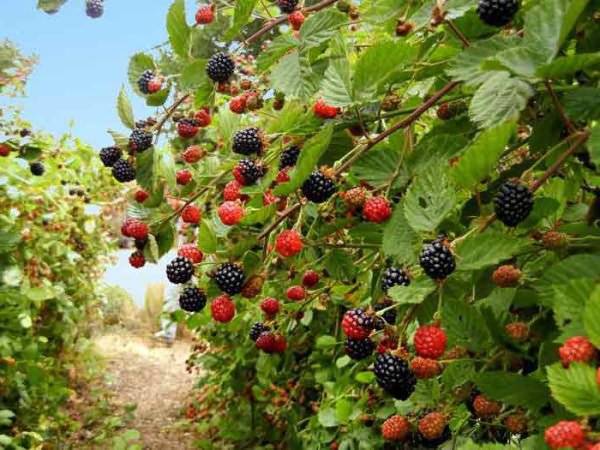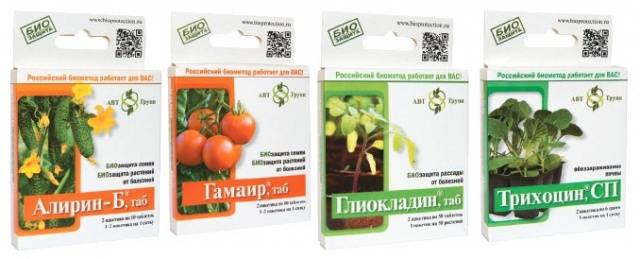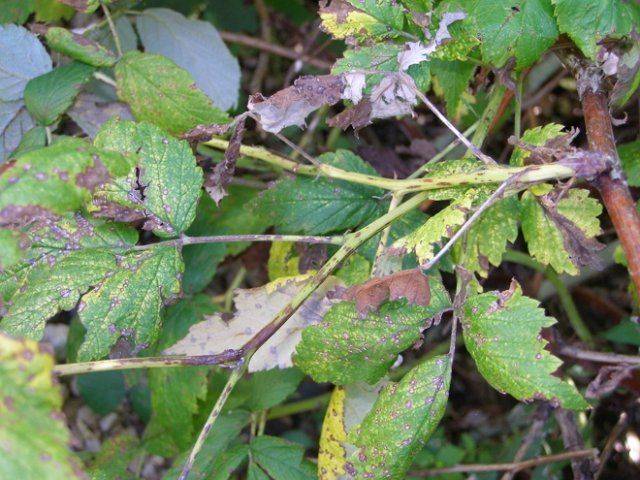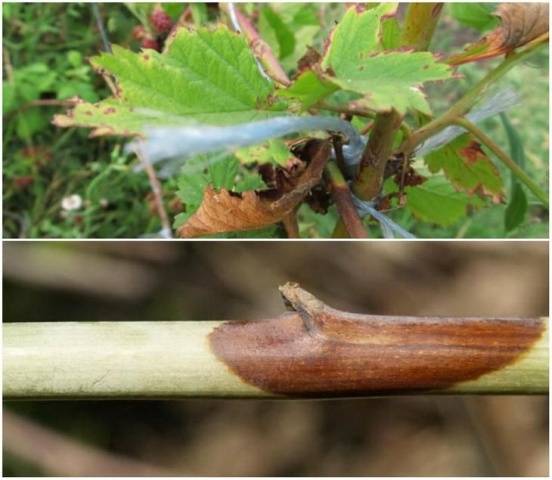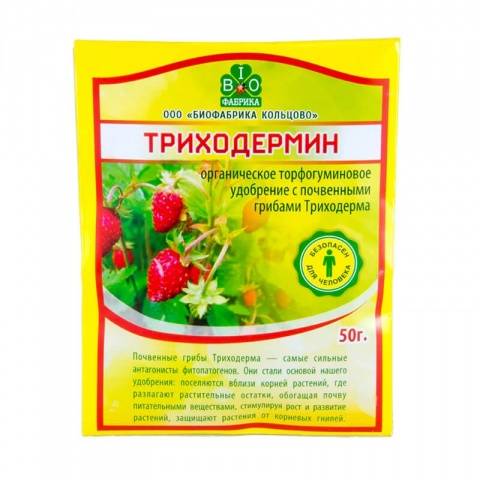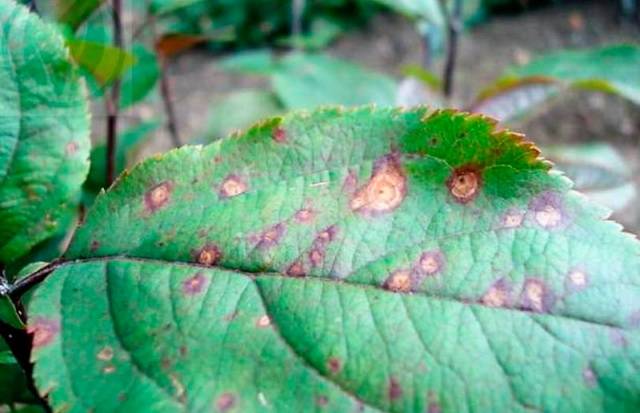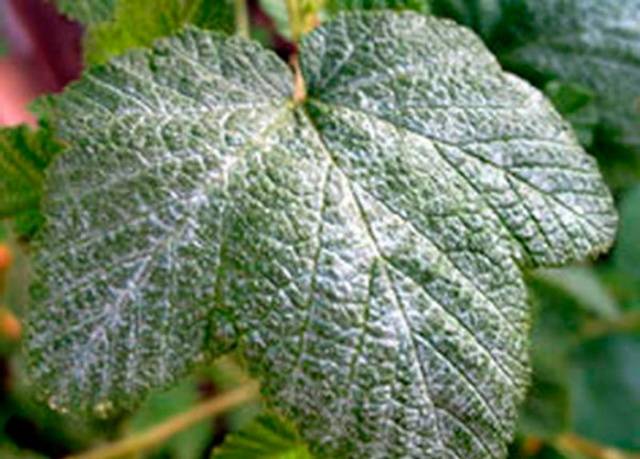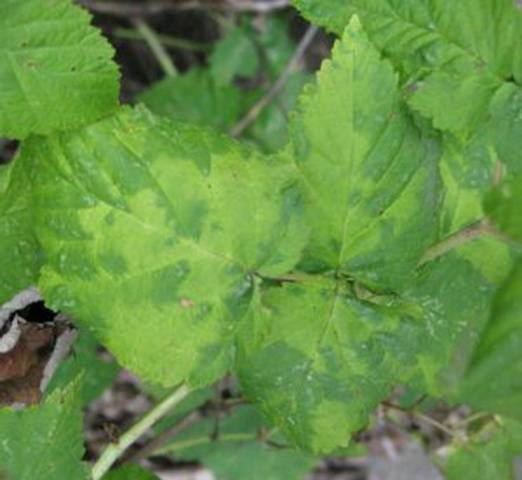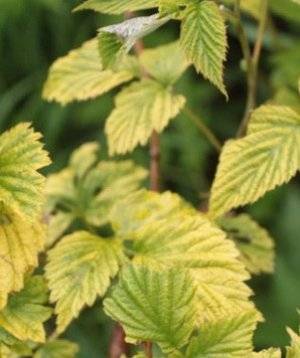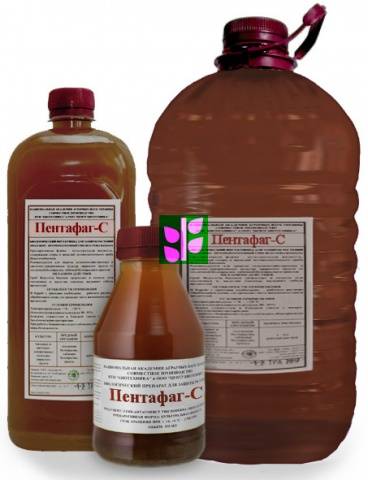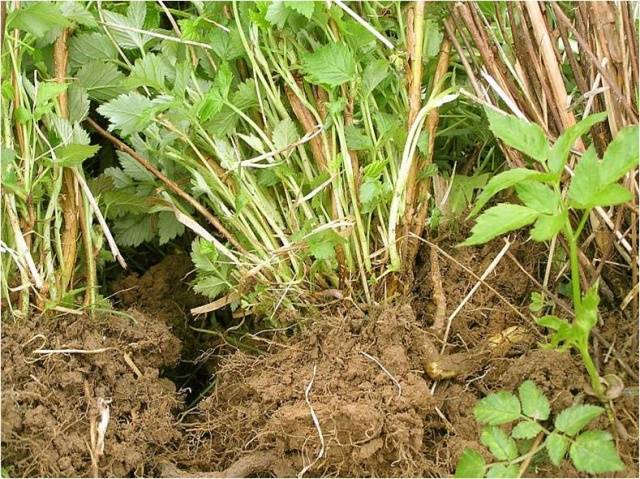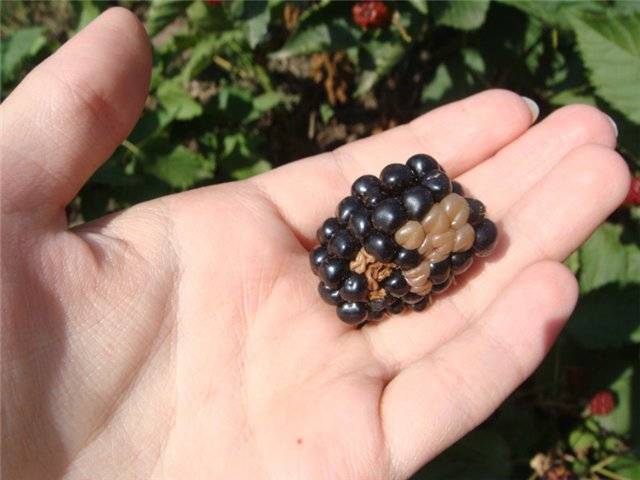Content
- 1 Classification of diseases of blackberry
- 2 Fungal
- 3 Viral
- 4 Blackberry bacterial diseases: stem and root cancer
- 5 Overgrowth or witch's broom
- 6 What other reasons can blackberries hurt?
- 7 Compliance with the rules of agricultural technology is the key to a healthy shrub and a bountiful harvest
- 8 Conclusion
Cultural or garden blackberries have recently become widespread in household plots in Russia. Its most common and popular varieties originate from America or Western Europe, where weather conditions differ significantly from Russian ones. In this regard, the resistance to diseases actively advertised in the descriptions of blackberry varieties may be somewhat exaggerated. And since experience growing blackberries and the fight against its various ailments in our country has not yet been sufficiently accumulated, then we have to focus mainly on its closest relative - raspberries.
Classification of diseases of blackberry
Like most representatives of the plant kingdom, all possible diseases of the garden blackberry are divided into four main groups:
- Non-infectious - caused by various unfavorable weather conditions and mistakes in maintenance.
- Fungal - are caused by fungal microorganisms, the spores of which are able to move in all unthinkable ways: with the help of wind, rain, pests, on tools, clothes and, of course, on various plant organs.
- Bacterial - caused by dangerous bacteria that live mainly in the soil.
- Viral - are caused by viruses that can spread in various ways, but are most often transmitted through insect pests.
In general, insect pests play a significant role in the spread of diseases on blackberries, but in more detail about blackberry pests and control methods with them you can find out from the article placed in another section.
Fungal
Diseases caused by fungal spores are the most common of all blackberries can be susceptible to. In 80% of cases of problems with blackberries, it is safe to say that she was a victim of one or another fungal disease. The main signs of fungal diseases are spots on the leaves and stems of blackberries of various sizes, shapes and colors. Spores of fungal diseases penetrate into the tissues of blackberries through lentils, stomata and wounds and scratches on the aerial parts of plants.
Septoria (White Spot)
The causative agent is the Septori Rubi West mushroom. The source of infection is most often the diseased planting material.
The disease may be completely absent in hot and dry summers, but it will manifest itself in all its glory with an abundance of rainfall and moisture, especially in thickened blackberry plantations. The first signs of septoria appear at the very end of spring - early summer, first on last year's shoots. They are most easily noticed on the leaves - small light brown spots gradually turn into white ones with a dark border. On the shoots, almost imperceptible light brown spots appear around the buds and internodes. The disease is actively spreading throughout the summer season, and by August the leaves and shoots are covered with small black dots, which are the fruiting bodies of the fungus.
The consequence of the disease is a slowdown in the movement of nutrients through the tissues of shoots and leaves, a delay in development and shoot formation. As a result, the harvest of the current and next year suffers.The berries are crushed, do not ripen and rot.
- The most important among the methods of combating the disease is to immediately cut and immediately burn the affected shoots with leaves. Excessive fertilization with nitrogen fertilizers can contribute to the spread of the disease, so make sure that the blackberries are properly fed.
- Before bud break, it is necessary to carry out prophylactic spraying of blackberry bushes with a 1% solution of Bordeaux liquid.
- As a preventive measure, spraying blackberries from 3 to 5 times per season with a solution of Fitosporin (5 g per 10 liters of water) will also help.
- When the first signs of the disease are found, the leaves and stems of blackberries should be abundantly sprayed with a solution of Alirin B and Gamair (1 tablet of each biological product is dissolved in 1 liter of water).
Anthracnose
The disease is spread by the fungus Gloeosporium venetum Speg. Fungal spores are found in the soil or in plant debris.
Anthracnose is also especially active in humid and cool conditions; excessive watering can contribute to the manifestation of the disease.
All parts of the blackberry are susceptible to disease, but leaves, shoots and petioles are especially affected by it. The first signs can be observed already at the very end of spring.
Leaves along the edges and along the main veins are covered with gray-violet spots of irregular shape up to 2-4 mm in size. In the lower part of the replacement shoots and root suckers, elongated purple spots with cracks in the middle can be seen. Over time, they become dirty gray with peeling bark all around. Fruit twigs completely dry out and die off, and when it comes to fruits, they do not ripen, shrink and fall off.
Purple Spot (Didimella)
The causative agent of the disease is the fungus Didimella applanata Sacc. Warm, humid winters and high rainfall springs and summers contribute to the development of the disease.
It is not the leaves that suffer from Didimella, but young shoots, petioles, buds, so it is rather difficult to notice it in time. Leaves are not affected as badly as in the case of other diseases.
First, in the lower and middle part of the blackberry shoots, there are vague purple specks that can grow rapidly and become dark brown. They appear mainly in the places of attachment of the petioles, which are also covered with similar spots. The bark of the blackberry at the sites of the lesions becomes covered with cracks, the buds dry out, the young shoots wither, the leaves, covered with dark spots with a yellow border, fall off.
Flowering is very scarce, and a minimal amount of ovaries is formed, which, of course, affects the yield. However, the quality of the berries leaves much to be desired - they ripen poorly, have a rough and tasteless drupe.
If the disease is severely affected by the disease, blackberry shoots lose their winter hardiness and the plants may simply not survive until the next season.
Rust
The Phragmidium Link fungus, which causes this disease, lives and hosts exclusively on blackberries. Other berry crops are of little interest to him.
It has five stages of development, but it all begins at the end of spring, when tiny dusty brownish-yellow dots appear on the leaves and stems, which turn into large spots as they develop.
The disease, which seems harmless at first, is capable of carrying, with its intensive development, up to 40-60% of the harvest.
The shoots in their lower part are colored brown with light sores, colored orange in the center.
In the middle of summer, with the development of the disease, orange-brown pads are already clearly visible on the upper side of the leaves. Over time, they appear already on the underside of the leaves. With severe damage, the leaves begin to fly around, and the shoots wither.
Although rust spreads quickly in high humidity conditions, it can also attack blackberry bushes weakened from lack of watering.
How to deal with major blackberry fungal diseases
More recently, there was no alternative to chemical drugs for the treatment of fungal and bacterial diseases, and copper-containing drugs such as Bordeaux liquid were considered the safest means for the prevention of diseases. Over the past decades, the situation has changed somewhat and at the moment, for the treatment of various ailments of blackberries, rather harmless biological preparations can be used, which are created on the basis of strains of bacteria and fungi that most effectively fight with their closest relatives.
Choose for yourself which of the drugs to use for the prevention and treatment of the above blackberry diseases, based on their availability in your region and your own preferences.
- A 1% - 3% solution of the Bordeaux mixture is used in early spring for treating whole blackberry plants and watering the root zone before the buds open for preventive purposes.
- A solution of Trichodermin (100 ml per 10 l of water) is used to spray blackberry bushes from the moment the buds bloom every 10-20 days, depending on the extent of the disease.
- The second time after bud break, but before flowering, blackberries are sprayed with Oxyhom or Kuproksat.
- In the case of manifest signs of disease, blackberry treatments are effective twice a season with an interval of 3-4 weeks with solutions of Fitolavin 300 (0.2%) and Fundazol (0.2%).
- For treatment, you can also use chemicals such as Topaz and Topsin M (before flowering and after fruiting).
- In the fall, the shoots remaining overwintering are sprayed with a 3% Farmayod solution.
- With obvious signs of diseases that manifested themselves during the summer, in the fall and the next early spring, all blackberry bushes and the ground under them are shed from a watering can with a 5% solution of iron or copper sulfate.
Gray rot
The causative agent of the disease is the fungus Botyrtis cinerea Pers. It lives not only on blackberries, but also on many berry and fruit crops. In the soil, its spores may not lose vitality for several years in a row.
Infection of blackberries with fungal spores usually occurs during the flowering period. But all organs of the blackberry are affected - both aboveground and underground, although usually the disease is most easily recognized on fruits - light brown softened spots, and soon the entire drupe becomes covered with a fluffy light gray bloom. Leaves may dry out, shoots also become covered with brownish spots.
In autumn, the affected blackberry shoots are covered with black tubercles - a haven of spores.
Harvested berries from infected blackberry plants immediately deteriorate, cannot be stored, and cannot be eaten even after heat treatment.
To prevent infection of blackberries with gray rot, the most effective method is to tie the branches of the lower tiers to a trellis, which is at least 60-70 cm above the ground, and simply remove the lower fruit buds so that they do not fall below the lowest level of the trellis. When tying the shoots to the trellis, distribute them not very tightly, in the form of a fan, for better airflow.
Be sure to remove all berries that are rotting and damaged after bad weather.
Of the chemical preparations against the disease, Horus, Strobi are effective, with which the blackberries need to be treated before flowering and after the berries ripen.
Phylostictosis (Brown spot)
This disease, depending on the specific type of pathogen, can have different symptoms. If the blackberry is attacked by the fungus Phyllosticta ruborum Sacc, then small light specks without a border will appear on the leaves.
If the lesion occurred as a result of an attack by the fungus Phyllosticta fuscozanata Thum, then the spots on the leaves will be dark brown, larger in size with a light border. Later, the leaves are additionally covered with black dots - the fruiting bodies of the mushrooms.
If you do not fight the disease, then the blackberry plants weaken, the leaves fall off, and you cannot count on a good harvest.
Any of the above fungicides can be used to combat phylostictosis. As a rule, two treatments are enough - in spring and summer or in autumn after fruiting.
Powdery mildew
The causative agent of the disease is the fungus Sphaerotheca macularis Wall. The disease develops, as a rule, in the first half of summer and is most intense in humid conditions. Leaves, young parts of shoots and berries are affected. The main symptom is the appearance of a characteristic white-gray powdery coating.
With the development of the disease, the blackberry stops growing, the berries acquire an ugly shape, decrease in size, and an unpleasant odor appears from them.
When the first symptoms of the disease appear, blackberry bushes are sprayed 3-4 times with an interval of 10-15 days with a solution of Fitosporin (5 g per 10 l of water) or Trichodermin (100 ml per 10 l of water).
Viral
Viral diseases are not found on blackberries as often as on raspberries, and they usually tolerate them quite persistently, but nevertheless, it is not worth taking them off at all and it is advisable to have an idea about them, since they may not affect the yield in the best way.
Curliness
This disease is not very common and mainly affects the shoots of the second year of life. The edges of the leaves curl downward, the underside acquires a bronze tint, and the veins turn glassy and become stiff. The flowers are deformed, and the fruits are practically not set.
Mosaic
The greatest danger of this viral disease on blackberries is that the affected plants may not survive the winters.
It is recognized by the chaotic yellow and green spots on the leaves. With the development of the disease, the leaves may be slightly deformed, and the spots become more prominent. Can be transmitted with planting material or raspberry shoot or leaf aphids.
Yellow mesh
This type of viral disease has signs of non-infectious chlorosis associated with a deficiency or excess of certain elements. The virus gets to blackberries mainly from the raspberry-shoot aphid.
During the warm season, the entire bush is usually covered with yellow leaves, the shoots stop growing.
Ring spot
The virus is spread by nematodes - small worms that live in the soil. As a result of this disease, blackberry leaves are slightly deformed and covered with faint yellow spots. Yellow spots are clearly visible only in spring and autumn; in summer they become invisible. Diseased blackberry plants become brittle and brittle.
Treatment methods
Since there are no reliable methods of curing viruses yet, great attention should be paid to preventive measures:
- Buy only healthy seedlings from reliable nurseries
- Actively combat aphids, nematodes and other pests that carry viruses
- Obligatory timely destruction of diseased plants
- Finally, 3-time prophylactic treatments of blackberries with Pentafag, which has antiviral properties, every 10-12 days. (200 ml per 10 l of water).
Blackberry bacterial diseases: stem and root cancer
The causative agent of the disease is the bacterium Agrobacterium tumefaciens, which lives in the soil. It is capable of infecting roots and shoots, on which tuberous growths are formed, brown on the outside and light on the inside.
Shoots are suspended in development, leaves turn yellow, root shoots grow thin and weakened. Crops fall, shoots lose their resistance to drought and frost.
Since the infection of blackberries with cancer occurs through small wounds, it is necessary to be very careful about the planting process, trying not to damage the root system.
All diseased plants must be pruned and destroyed. The remaining blackberry bushes are treated twice with a 0.5% solution of Fitolavin or a solution of Pentafag-C (200-400 ml per 10 liters of water).
Overgrowth or witch's broom
The disease is caused by mycoplasmas - unicellular microorganisms. From the center of the bush, many thin and low shoots grow, which practically do not develop. Typically, this virus infects blackberry plants weakened by drought, freezing or other stress.
Affected plants are to be destroyed, and the remaining bushes must be treated after harvesting the fruits with a 1.5% solution of Farmayod.
What other reasons can blackberries hurt?
Blackberries can suffer greatly during the ripening period from high temperatures and direct sunlight. First of all, berries are damaged. They turn white, and seem to shrink. With prolonged heat, the blackberry bushes themselves can suffer: dehydration occurs, burns of leaves and stems, weakened shoots can dry out and die.
Therefore, in hot climates, it is preferable to plant blackberries in partial shade and provide regular and abundant watering on especially hot days.
Many gardeners are often interested in why blackberry leaves turn yellow in spring. Of course, this can be a sign of some kind of disease (bacterial cancer, yellow mesh), but most often non-infectious chlorosis is to blame. Yellowing of leaves is associated with a lack or excess of one of the macro or microelements, as well as excess moisture on heavy soils.
In order to avoid this phenomenon, it is advisable to feed the blackberry with a full complex of fertilizers with the maximum amount of microelements in a chelated, that is, easily assimilated form.
Compliance with the rules of agricultural technology is the key to a healthy shrub and a bountiful harvest
The causes of damage to blackberries by the diseases listed above are very similar: high humidity, thickening of shoots in the bushes, lack of ventilation and non-compliance with sanitary standards for caring for bushes.
Accordingly, the best prevention of these diseases will be the following measures:
- Selection of a suitable place for planting blackberries, taking into account the climatic and soil requirements for each variety. Try to choose varieties that are resistant to disease, frost and drought.
- The choice of healthy planting material and the laying of a blackberry, observing the required distance between the bushes, as a rule, is about 2.5 meters.
- Mandatory rationing in the spring and in the middle of summer of growing blackberry shoots, so that the bushes are well ventilated and not thickened.
- Lack of nearby plantings of raspberries and strawberries, as well as thickets weeds.
- Pruning the lower shoots and leaves to a height of 50-80 cm, these buds are still unproductive, but there is no contact of the blackberry with the soil.
- Pruning and timely burning of old shoots immediately after fruiting.
- Cleaning in late autumn and early spring the land under the blackberry from plant residues, loosening and mulching with humus.
- Careful regular inspection of blackberry bushes for signs of pests and diseases in order to take early action.
- Tearing off damaged leaves and removing shoots with traces of diseases.
- Avoid waterlogging and overdrying of the soil under the blackberry.
- Use biological agents as much as possible, including prevention, and use chemistry as little as possible.
Conclusion
If you scrupulously follow all the requirements of agricultural technology and carefully select varieties and seedlings for planting, then problems with blackberry diseases will be minimized. And if they do, then now you know what to do in these cases.
